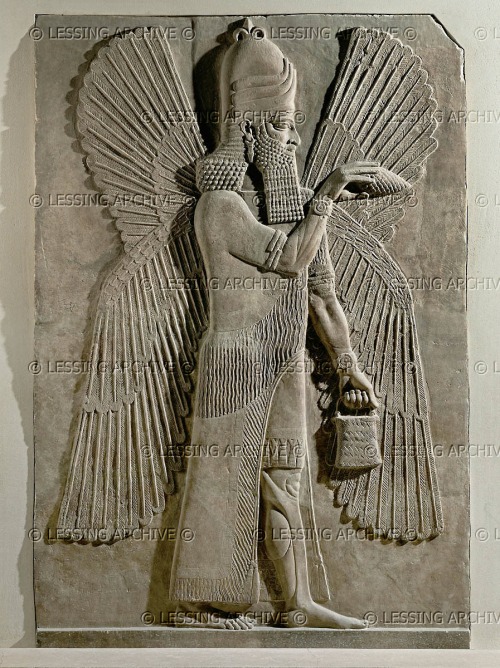Kvanvig: The Apkallu List from Bīt Mēseri
“Reiner numbers the lines 1’-31’, which covers the lines 9-31 in Weiher’s edition. Borger knew Weiher’s work on the Uruk recension of Bīt Mēseri when he translated the text, even though Weiher’s final edition was published afterwards. We will return to the different aspects of the text later.
- 1-2: Incantation: Uanna, who completed the plans of heaven and earth;
- 3-4: Uannedugga, who is given broad understanding;
- 5: Enmedugga, to whom a good fate is decreed;
- 6: Enmegalamma, who was born in a house;
- 7: Enmebulugga, who grew up on a river-flat;
- 8: Anenlilda, the purification priest from Eridu;
- 9. Utuabzu, who ascended to heaven;
- 10-11: the pure carps, the carps from the sea, the seven,
- 12-13: the seven apkallus, born in the river, who keep in order the plans of heaven and earth.
- 14-15: Nungalpiriggaldim, the apkallu of Enmerkar, who brought down Ištar from heaven into the sanctuary;
- 16-17: Piriggalnungal, born in Kiš, who angered the god Iškur / Adad in heaven,
- 18-19: so he allowed neither rain nor growth in the land for three years;
- 20-23:Piriggalabzu, born in Adab / Utab, who hung his seal on a “goat-fish” and thereby angered the god Enki / Ea in the fresh water sea, so that a fuller struck him with his own seal;
- 24-25: the fourth, Lu-Nanna, two-thirds apkallu,
- 26-27: who expelled a dragon from É-Ninkiagnunna, the temple of Ištar and Šulgi;
- 28-29: the four apkallus, of human descent, whom the Lord Enki / Ea has endowed with broad understanding.
(Bīt Mēseri III, 1’-29’).

Now compare this Nimrud bas relief from the Louvre: an ummânū sprinkles water with a mullilu cone in his right hand, holding his banduddu bucket in his left.
This ummânū wears bracelets with a concentric circular design, and rosettes are not apparent.
This ummânū also wears the common horned headdress of Anu, but with three stacked layers of horns.
As noted elsewhere, this headdress is surmounted by an object that resembles a partial fleur de lis.
From Nimrud, capital of king Ashurnarzipal.
Louvre, AO 19845
We have a stable tradition extending over several hundred years about the names and order of the seven apkallus living before the flood. The list in Bīt Mēseri is the oldest one, and is Neo-Assyrian; the list in Berossos is from around 290; the Uruk list is dated to 164 / 165.
It is, however, clear that the Greek text of Berossos’ Babyloniaca is in no way part of a line of transmission. In this respect Berossos is of interest because his list is a witness to a cuneiform textual tradition that existed in Babylon at this time.
It shows, together with the Uruk tablet and the Babylonia recension of Bīt Mēseri, that the list of antediluvian sages did not only belong to the Assyrians, but was adopted by the Babylonians in later centuries.
The names of the apkallus are not as old as the names of the antediluvian kings. They have similarities with the names of known literary works.
(cf. W.W. Hallo, “On the Antiquity of Sumerian Literature,” JAOS 83 (1963): 167-76, 175f.)
Moreover, three of the sages have names constructed of en-me. Three of the kings in the lists have similar constructions: Enmenluanna, Enmegalanna, Enmeduranna (Enmeduranki). These three names can tentatively be translated as follows: “Lord of the me, man of heaven; Lord of the great me, of heaven; Lord of the me, band of heaven.”
(Cf. Kvanvig, Roots of Apocalyptic, 193, note 109 for a suggested translation of the whole Antediluvian King List, based on D. O. Edzard, “Enmebaragesi von Kiš,” ZA (NF) 19 (43) (1959): 9-26, 18.)
Helge Kvanvig, Primeval History: Babylonian, Biblical, and Enochic: An Intertextual Reading, Brill, 2011, pp. 108-10.

